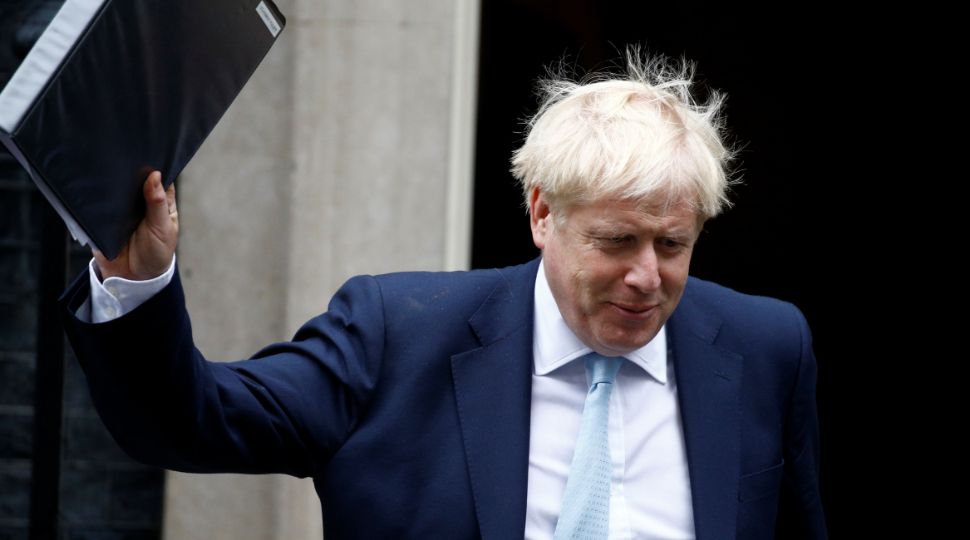Brexit as a Tool in Boris Johnson's Political Strategy

Johnson was critical of the policies of his predecessor, Theresa May, and has revised them. While her promise of a quick and orderly exit from the EU led the Tories to victory in 2017, with the party picking up its largest share of votes since 1983, she lost the Conservatives’ majority in the House of Commons. She also made mistakes, including the mismanagement of party discipline and the lack of a convincing Brexit strategy, resulting in the Tories’ defeat in local and European elections in May. Her credibility in the eyes of Brexit voters was undermined by the twice-postponed EU exit date and the scale of concessions to the EU.
Strategy Goals and Instruments
Johnson’s long-term goal is to reshape the Tories’ electoral base, enabling them to keep winning single-party parliamentary majorities in a multi-term perspective. This is to be achieved by taking over a substantial share of the Labour Party voter base thanks to a programme combining the promise of a quick exit from the EU with investments in public services. Hence, his main short-term goal is to leave the EU on 31 October.
To subordinate internal party opposition, Johnson has been narrowing the programme joining the Tories. In particular, he set as a condition for ministerial candidates their acceptance of the possibility of leaving the EU without a deal. Restoration of party discipline resulted in the withdrawal of, or resignation from, the Tory whip of about 30 MPs. These changes in personnel, however, reduced the divergence of views represented by the MPs and by party members, of whom around 80% support a hard (“no-deal”) Brexit. Johnson also demonstrated to his electorate the willingness to compromise with the EU only at the price of the Union’s consent for revision of the “backstop” concerning the island of Ireland.
The Strategy as a Catalyst for Crisis
The implementation of Johnson’s strategy has encountered major obstacles. The demonstration of the UK’s readiness to accept a “no-deal” Brexit was supposed to allow for success in the negotiations with the EU. Although Johnson significantly accelerated and intensified technical and political preparations for this scenario, at the same time his strategy galvanised the opposition in his own party and in parliament. MPs opposed to “no deal” took parliament’s prorogation between 9 September and 13 October to the Supreme Court of the United Kingdom, which revoked it. MPs also adopted the Letwin-Benn Act on 9 September, which obliges the prime minister to submit a request to the European Council to postpone the Brexit date in the event of a lack of an EU-UK withdrawal agreement by 19 October.
On the one hand, these events weaken Johnson’s negotiating position vis-à-vis the EU; on the other, they intensify the UK domestic crisis, shrinking the group of voters willing to compromise on Brexit (now about 20%). This pushes the British parties to increasingly extreme positions in relation to Brexit: currently, the Liberal Democrats call for an outright cancellation of the EU exit without another referendum, Labour seeks a soft Brexit or revocation after a referendum, the Tories are targeting a hard, “no-deal” Brexit, while Nigel Farage’s Brexit Party demands outright a “no-deal” exit. Consequently, institutions that the UK constitution defines as politically neutral—such as the speaker of the House of Commons, the monarchy, the civil service, and the courts—have been drawn into the political conflict.
The Emergence of a New Cleavage in British Politics
Johnson’s strategy of reshaping the party system is a response to the prolonged decline in support for the Tories and Labour as the dominant parties. Their total support has fallen since the early 1970s from 85% to around 60%, undermining the Westminster system. Since 2016, Brexit (85%) has become the basis for the political identification of voters, before party loyalty (60%). Currently, four leading parties are competing for votes—the Tories, Labour, the Liberal Democrats, and the Brexit Party—each of which has a chance of significant independent electoral success or at least depriving its competitors of the chance to win. The fiercest competition takes place within the pro- and anti-Brexit blocs.
The analysis of electoral attitudes shows the need for a party that offers investment in social services, support for social mobility (key investment in education), protection of the economic interests of lower-skilled workers (reduction in unskilled immigration, investment in training) and socially conservative values (new conservatives). On the other hand, there is space for a party representing the interests of the metropolitan professionals and middle class, satisfied with the current socio-economic model and international integration (new liberals).
The goal of the Tories seems to be to take the first position. This requires permanent recruitment—in fierce competition with the Brexit Party—of many current Labour voters. In turn, the Liberal Democrats are competing against Labour for the representation of metropolitan voters, including current Conservative voters opposing Brexit. While the clarity in Johnson’s programme favours him in competition with Farage, the constant conflict within Labour lowers its chances in the competition with the Liberal Democrats.
Conclusions and Perspectives
Johnson’s primary goal is Tory domination of the UK political scene. Since leaving the EU is a necessary condition for that, he is ready to renegotiate the withdrawal agreement with the EU or, if necessary, to leave without one.
The Letwin-Benn Act limits the possibility of implementing a “no-deal” Brexit. As a consequence, Johnson is trying to exit the EU on 31 October based on the November 2018 withdrawal agreement modified in line with the UK proposal of 2 October. It assumes the participation of Northern Ireland (NI) in the EU single market, automated customs controls away from the land border and a decision mechanism for Northern Ireland’s devolved authorities on the harmonisation of NI law with the EU. If talks with the EU fail, however, Johnson will most probably seek a “no-deal” Brexit at the end of October to save his image—even at the price of intensifying the constitutional dispute.
Since the loss of a parliamentary majority in September (through defections and other changes), the Johnson government has been trying to strengthen its position by proposing a snap election. The most important UK parties agree on the need for it, but there is a fierce dispute over the date. The opposition parties have twice blocked a general election for before 31 October because they view it as favourable to the Tories. A later election date is probable in order to split the Brexit vote between Johnson and Farage, increasing the chances of success for Labour and the Liberal Democrats.
The later a snap election occurs, the greater the degree of radicalisation of the Tories’ programme. In an extreme case, they could assume the demands of the Brexit Party. Johnson has been preparing for this eventuality since July, positioning himself as an uncompromising defender of the 2016 referendum. In light of opinion polls, Johnson’s actions to date, despite his defeats in parliament and the courts, make him credible in the eyes of his potential voters. As a consequence, Johnson’s latest efforts will focus on discrediting the centre-left opposition as undemocratic: as breaking their electoral commitments of 2015–2017, drawing into political conflict institutions committed to neutrality. This characterisation is being set against the pro-Brexit credentials of the government. Johnson’s message has been strengthened by spending commitments announced in September and October, demonstrating the Tories’ readiness to invest in public services.
If the transformation of the Tories into the party of a “hard Brexit” materialises, then regardless of the outcome of the upcoming general election, they will become a permanent obstacle to close EU-UK relations. If the opposition wins and Brexit is revoked, the transformed Conservative Party will most probably work on another attempt to leave the EU.
The emerging cleavage in the UK political scene will affect the shape of British foreign policy. For new conservatives, it will be natural to keep distancing the UK from the EU and to implement rapprochement with the Anglosphere, especially to maintain the alliance with the U.S. in global trade and political disputes. In turn, the new liberals will represent the tendency to maintain the current international order, including close cooperation with the EU even after leaving the Union.





